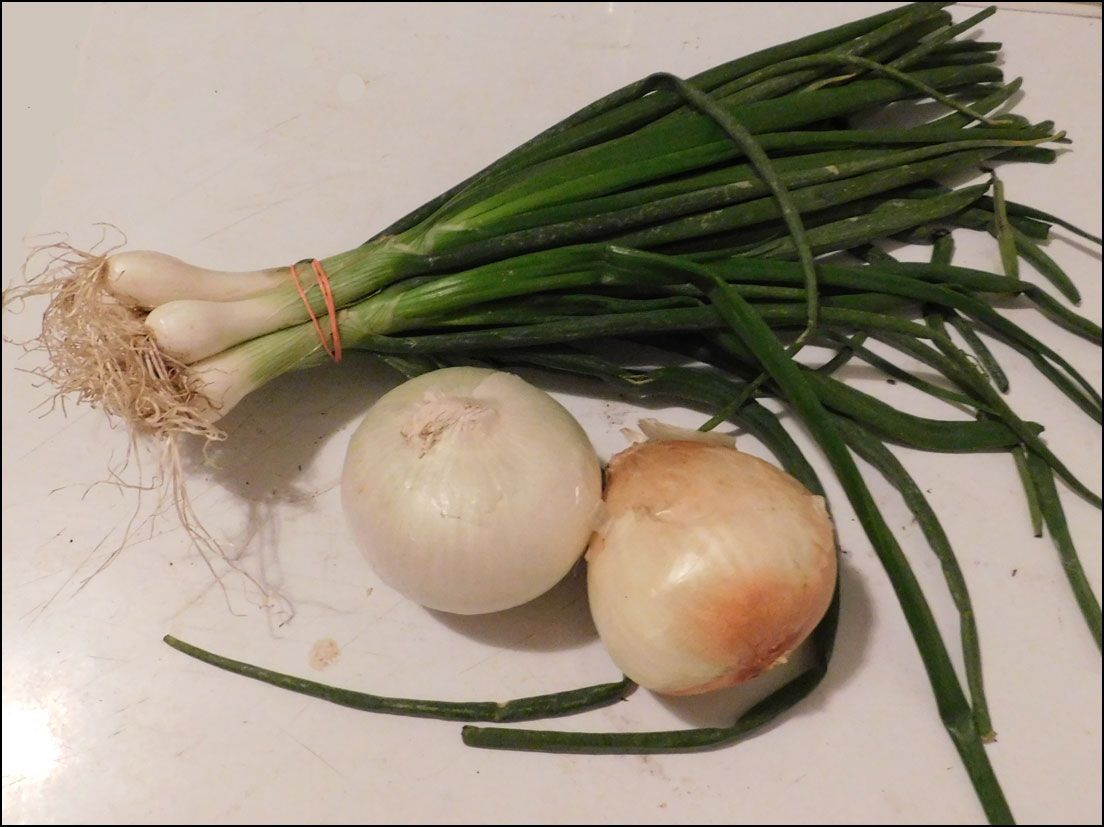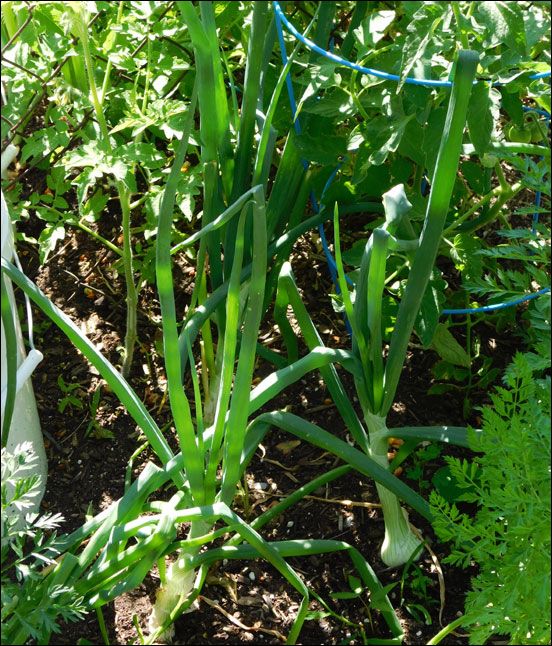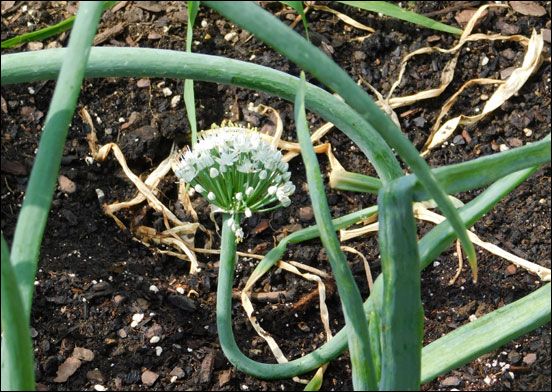Onions

ONION

BASIC IDENTIFICATION:
- Name: Onions, Allium Cepa, also known as the "Common Onion", or "Bulb Onion"
- General Description of the Plant: (text) .
- Why We Grow This? (common uses): As a food. The bulbs and leaves can be cooked or eaten raw. Onions dry and store well, making them a good crop for eating later.
- Historical Facts and Quotes: (text) .
- Can Be Confused With: The Allium family includes Garlic, Shallots, Chives and a few other bulb like plants which can be confused with the common Onion.
The Wild Leek or Ramps (Allium tricoccum), which grow in many American yards during the early Spring, can be confused with just sprouted common Onions.
- Cautions and Hazards: Onions are toxic to many small mammals, like house pets. Care should be taken they do not dig up and eat them in your garden by accident.
Onions also produces a chemical that can be an eye irriatent, when the bulb is cut up. Wash hands well and avoid touching your face and eyes when preparing. .

CULTIVATION:
- Popular Variations and Cultivars: (text) .
- Starting: (text - from seed; from cutting; by root stock, rhizome, bulb, grafting) .
- Bedding Out: (text - plant spacing, soil temperature, soil amendments, best rotation cycle) .
- Best soil type: (text - Loamy, moist; Sandy, well-drained; Mineral-dense, clay) .
- Sowing Season & Habits: (text - Annual, Perennial, Biennial, self seeding, self pollinating, dioecious) .
- Plant Health maintenance: diseases, pests, treatments, cold shelters, interventions: (text) .
- Companion Planting (text) .
.
HARVEST
- Signs of ripeness, over- and under-ripe: (text) .
- Gathering tips and techniques: (text) .
- Preserving and Storage: (text) .
- Post-harvest soil care and compostable wastes: (text) .
.
COOKING AND EATING
- Nutritional Information: (text) .
- How to prepare before eating: (text) .
- Useful recipes and cooking hints: (text) .
- Historical dishes and meals: (text) .
- Non-Food Usages: (text) .

SEEDS
- How This Plant Propagates: First year plants don't seem to produce seeds.
Plants allowed to over Winter and grow into their second year will produce a bulb at the top of their main stem. This bulb will slowly ripen and open to produce a dandilion like spherical flower.
- Harvesting Seeds: (text) .
- Seed Storage: (text) .
.
OTHER INFO
- Green Wizard forum links
- Outside Links
- Helpful Books
ClareBroommaker
Thu, 07/06/2017 - 13:10
Permalink
Very clean and green
My first reaction is "Very clean and green!". Both the bulbs and the leaves look flawless. I'm growing no onions but when I do, I get a lot of brown tips on the leaves. Do you know what the varieties are?
David Trammel
Wed, 07/12/2017 - 18:33
Permalink
The Heat Is Killing Them
The first picture of them after harvest are of onions I bough locally at our Farmer's Market. The second is of my garden.
I planted a mix of White and Yellow Onions, though I mixed up the placement and now won't know which are which until I harvest them, lol. I would have thrown in some of the other varieties but the Nursery was selling onion sets by the pound this Spring and of the two pound I bought, one yellow, one white, most ended up in a soup.
We're at over 90s this week, with 100 expected today. The heat is doing a number on the exposed bed of onions. It went from this
To this
I'm going to harvest these this weekend and weigh the sum out, with pictures.
This comes back I think, to the changes in how we grow food, I expect to occur due to climate change over the next few decades. Plant early with the risk a late frost will hurt your seedlings, then harvest at the beginning of the hot months of Summer. Replant in late August once the heat snaps, and either harvest another crop late at first frost, or over Winter the plants that can.
Or use containers which allow you to move them from full sun to some shade for protection.
The five onions I've been experimenting with in a container are doing ok, and look like they are bulking out. I recently added about an inch of compost to the container, since it seems I didn't plant them deep enough, their bulb tops were showing.